What is UV Light?
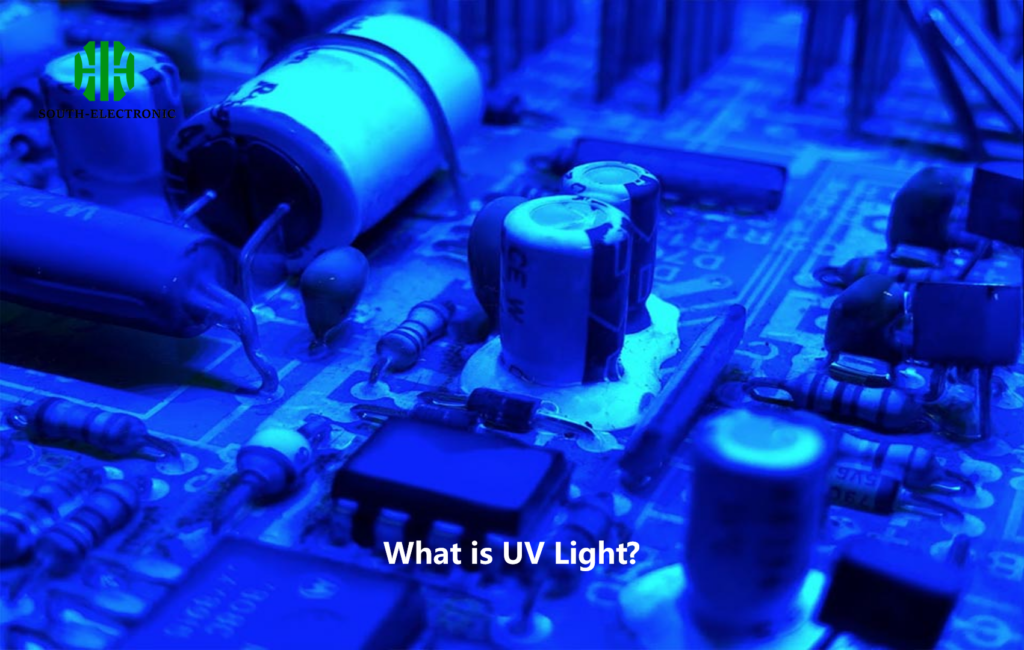
Ultraviolet (UV) light is a form of electromagnetic radiation with a wavelength shorter than visible light but longer than X-rays. It’s often used in industrial processes, including screen printing, because of its ability to quickly cure UV-sensitive inks.
In the context of screen printing, UV light helps “set” or “cure” UV inks, meaning it solidifies the ink by initiating a chemical reaction. The use of UV light dramatically speeds up the drying process, enhancing productivity and print quality.
How Does UV Light Work in Screen Printing?
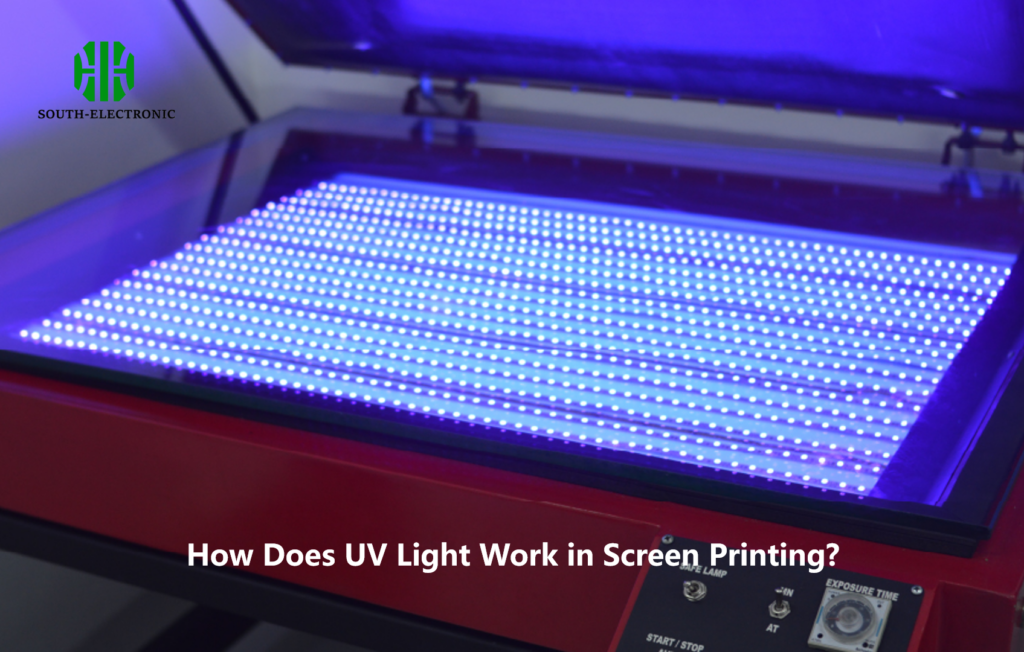
UV lights are positioned over or integrated into screen printing presses. After the ink is applied to the material, UV light is directed at the ink, initiating a curing process that hardens the ink almost instantly. This process improves production efficiency, as printers don’t need to wait for inks to air-dry or go through traditional heat drying processes.
What Types of UV Lights Are Used in Screen Printing?
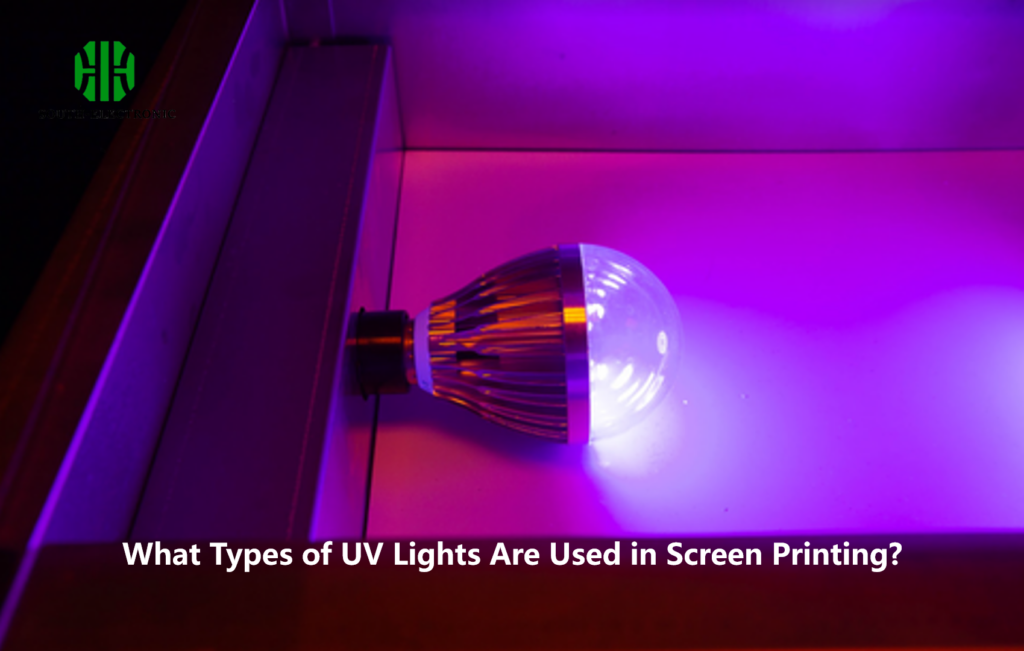
Main Types of UV Lights
There are three main types of UV lights used in screen printing: UV LED lights, Mercury Vapor UV lights, and Fluorescent UV lights.
- UV LED Lights: These lights are highly efficient, long-lasting, and eco-friendly. They have become increasingly popular in the screen printing industry for their energy efficiency and lower heat production.
- Mercury Vapor UV Lights: These are traditional UV lights used for curing. While still effective, they tend to consume more power and generate significant heat.
- Fluorescent UV Lights: An older technology still in use for hobbyists or smaller-scale screen printing operations. They are less energy-efficient compared to modern UV LEDs.
What Are the Differences Between UV LED and Traditional UV Lights?
The following table highlights the key differences between UV LED and traditional UV lights (mercury vapor):
| Feature | UV LED Lights | Mercury Vapor UV Lights |
|---|---|---|
| Energy Consumption | Low | High |
| Heat Production | Minimal | Significant |
| Curing Time | Fast | Slower than UV LED |
| Initial Cost | High | Moderate |
| Lifespan | Long (20,000+ hours) | Shorter (5,000 – 10,000 hours) |
| Environmental Impact | Eco-friendly, no mercury | Contains hazardous mercury |
How to Choose the Right UV Light for Screen Printing?
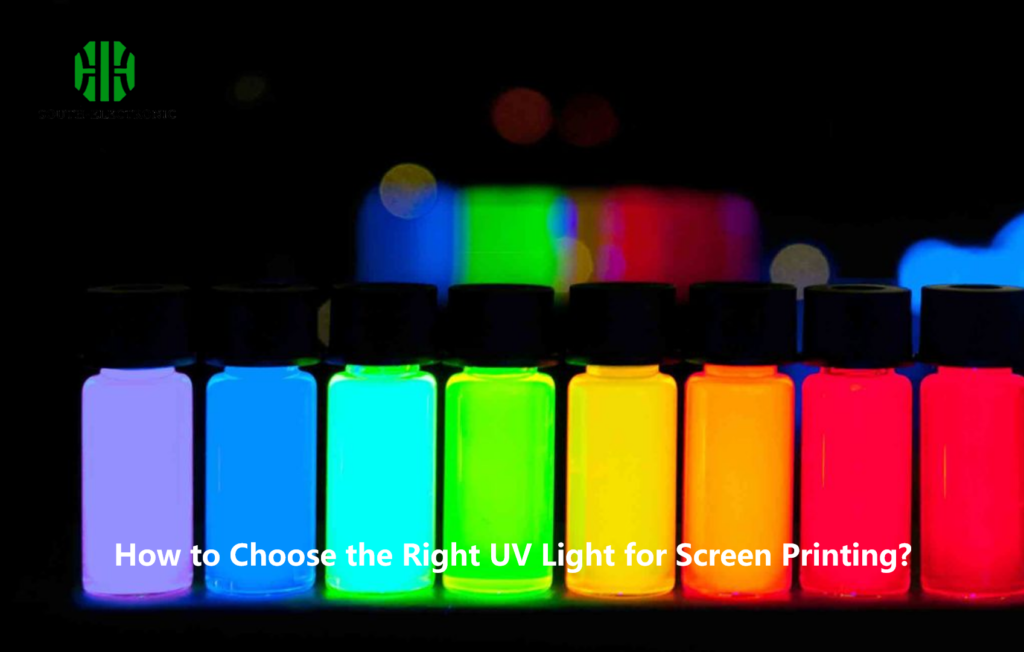
What Factors Should I Consider When Buying a UV Light?
When selecting a UV light for your screen printing setup, consider the following key factors:
- Size and Scale of Your Operation: If you run a small to medium-sized operation, UV LED lights are an excellent option because they’re energy-efficient and long-lasting. For larger operations, where higher production volume is needed, traditional mercury vapor lights may still be practical.
- Energy Efficiency: UV LED lights are known for their low energy consumption. If your operation is energy-conscious, they offer substantial savings over time.
- Budget Considerations: The initial cost of UV LED systems can be higher than mercury vapor alternatives. However, they often pay off in terms of longer lifespan and lower operating costs.
- Durability and Maintenance: UV LED lights typically last longer than mercury vapor lights and require less frequent replacement.
- Curing Speed: The faster curing times of UV LED lights can boost your overall productivity, allowing for quicker turnaround times on printed materials.
Example Table of UV Light Selection Based on Business Needs:
| Business Type | Recommended UV Light Type | Reasoning |
|---|---|---|
| Small-scale/hobbyist | Fluorescent UV | Low cost, suitable for low volume |
| Medium-sized businesses | UV LED | Energy-efficient, fast curing, eco-friendly |
| Large-scale operations | Mercury Vapor UV | High power output, larger curing area |
What Are the Benefits of UV LED Lights Over Traditional UV Lights?

Why Should I Choose UV LED Over Mercury Vapor UV Lights?
UV LED lights have several advantages over traditional mercury vapor lights, including:
- Longer Lifespan: UV LED lights can last up to 20,000 hours, significantly longer than mercury vapor lights, which typically last around 5,000 hours.
- Energy Efficiency: UV LED lights consume much less energy, which translates to lower operational costs over time.
- Environmentally Friendly: UV LED lights contain no mercury, making them safer to use and dispose of. Mercury vapor lights, on the other hand, contain hazardous materials.
- Heat Reduction: UV LED lights produce minimal heat, making them safer to use, especially in settings with sensitive materials.
Are There Any Drawbacks to UV LED Lights?
While UV LED lights are highly efficient and offer many benefits, they do have some downsides:
- Initial Cost: The upfront cost for UV LED systems is higher than traditional UV lights.
- Ink Compatibility: Not all screen printing inks are compatible with UV LED systems. You may need to switch to UV-curable inks specifically designed for these lights.
Top Recommended UV Lights for Screen Printing in 2024
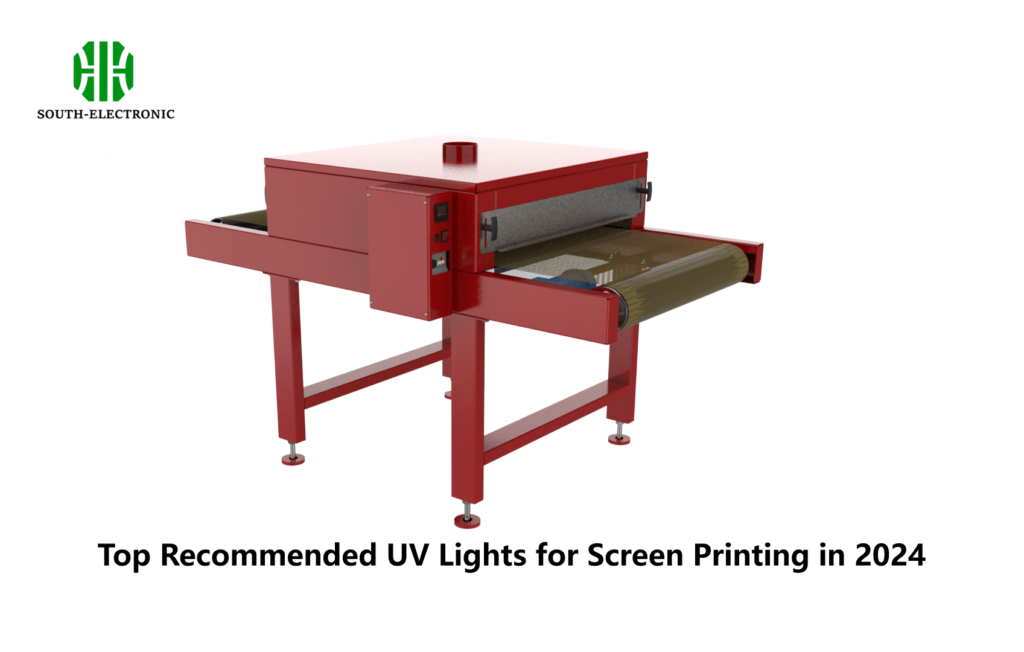
Here are some of the top-rated UV light options for screen printing:
1. Anatol UV LED Curing Systems
- These systems are known for their energy efficiency and fast curing times, ideal for medium to large-scale operations.
2. M&R’s i-Image UV LED Exposure Unit
- Perfect for businesses focused on high-quality, precise prints. The i-Image system offers a fast, reliable curing process.
3. Blackline UV LED Systems
- A popular choice for eco-conscious operations, offering energy savings and a long lifespan.
Conclusion
Choosing the right UV light for your screen printing operation depends on your business size, energy efficiency needs, and budget. UV LED lights offer the most benefits in terms of energy savings and longevity, though they come with a higher upfront cost. For large-scale operations, traditional mercury vapor lights may still be viable. Whatever your needs, investing in the right UV light will significantly impact the efficiency and quality of your prints.



